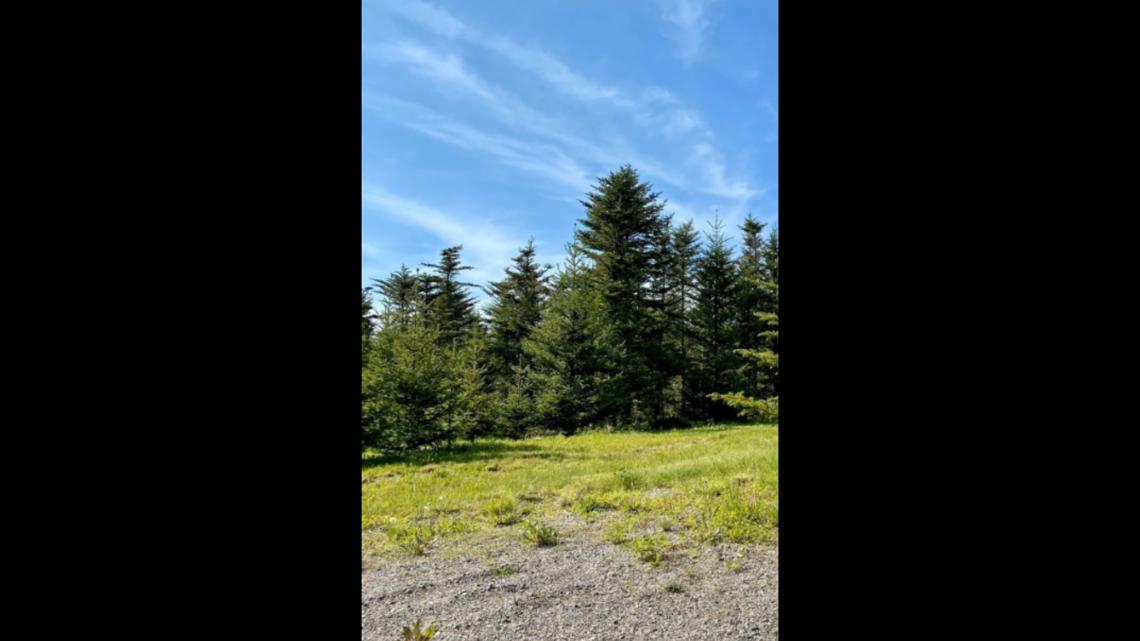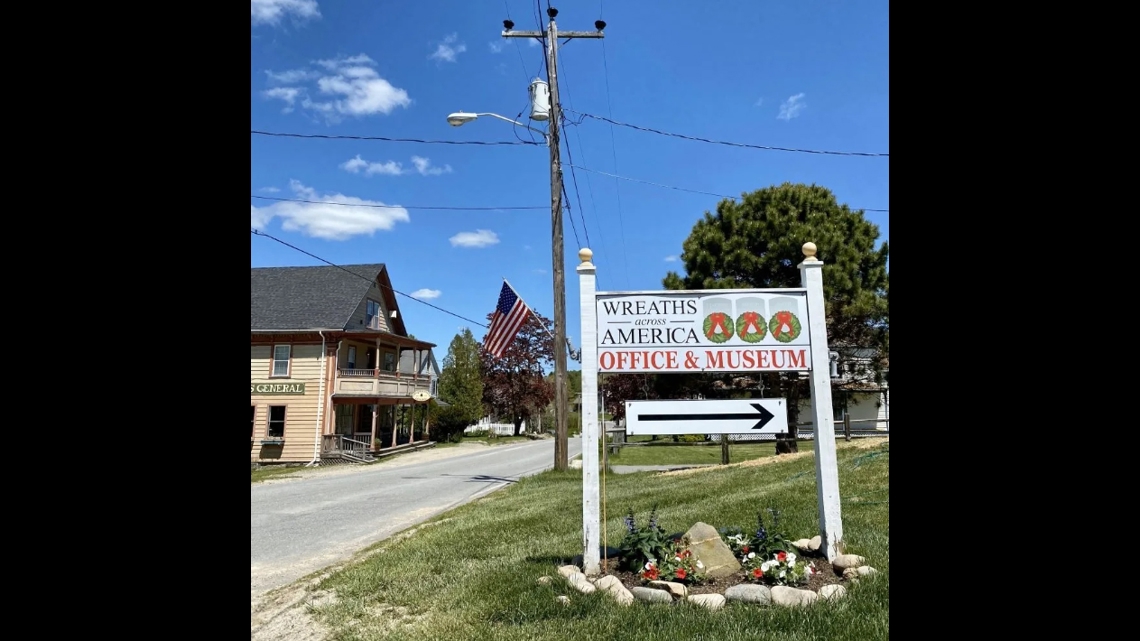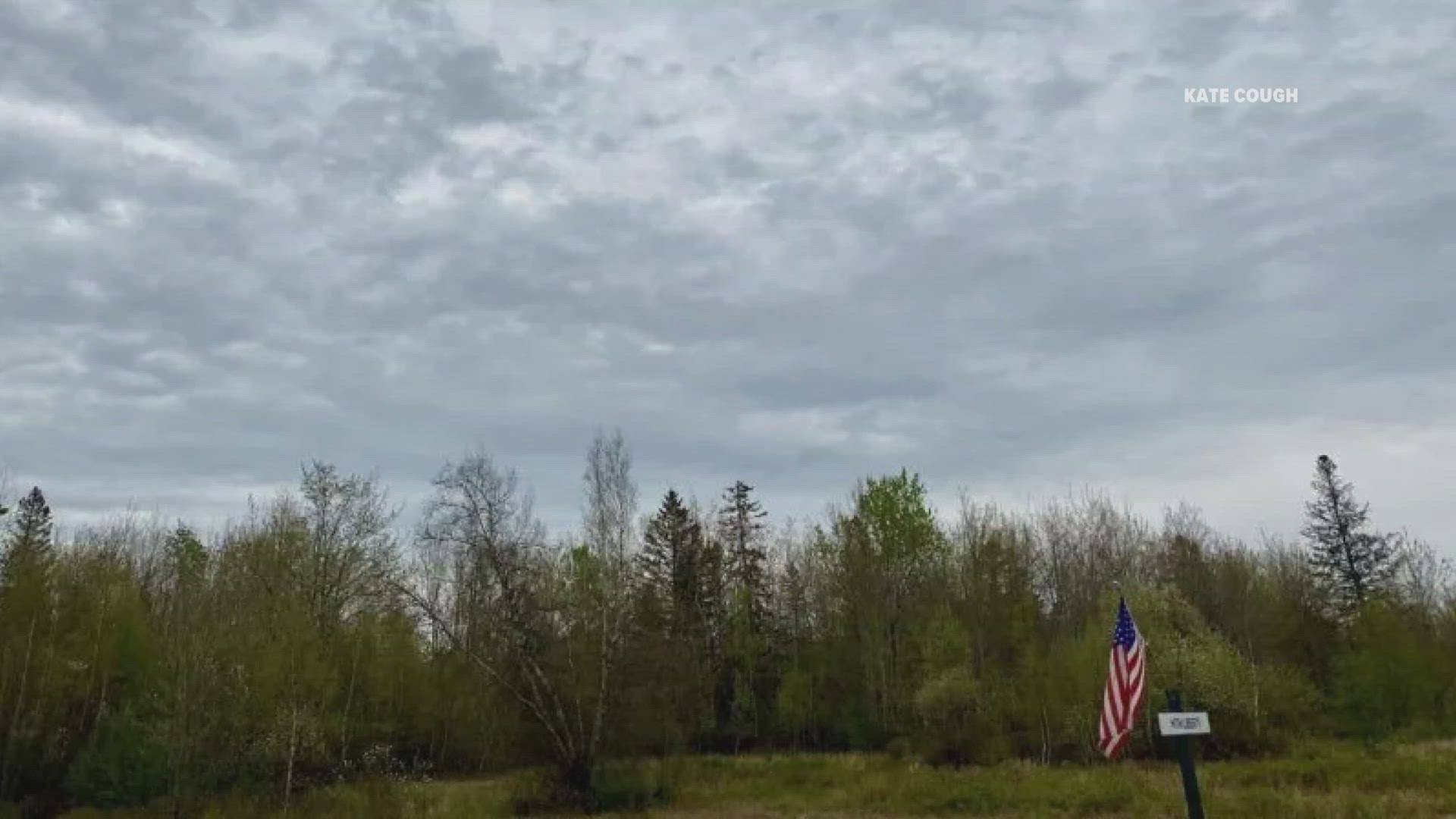ADDISON, Maine — Along the sea-smoke-covered shores of Great Wass Island Preserve in Beals, the swelter of an unusually hot June day melted away. The preserve’s ever-present maritime winds carried the chill of salt spray over granite ledges, verdant heaths and jack pine woodlands.
A mere 13 miles away on the mainland, something less pleasant wafted through the air: the toxic pesticide imidacloprid. It is one of several popular neonicotinoids, a class of pesticides designed to mimic nicotine, whose use is banned in the European Union and restricted in 10 U.S. states.
On June 10, the Columbia Falls-based Worcester Holdings — the company behind the scrapped Flagpole of Freedom project — notified nearby Addison residents that the company would use drones to spray imidacloprid over 190 acres of its pine forest this summer.
The pesticide is being used to control balsam gall midge and woolly adelgid in the fir trees that supply balsam branch tips for Worcester Wreath, one of the company’s holdings.
The news caused a furor on social media, with residents alarmed about the potential threat to wildlife, humans and the environment.
But the Worcesters aren’t the only ones applying pesticides. The practice is common in forestry and agriculture.
A recent push to ban aerial pesticide application in the state was vetoed by Gov. Janet Mills, but environmental advocates continue to push for more regulations.
“We’ve long been concerned about the impacts of pesticides,” said Heather Spalding, deputy director of the Maine Organic Farmers and Gardeners Association. “There are so many studies, peer-reviewed studies — every week more and more information comes out about the impact on human health and the environment.”
In 2022, the U.S. Environmental Protection Agency concluded that imidacloprid and other neonicotinoids were “likely to adversely affect” endangered or threatened species, and critical habitats.
In addition to imidacloprid, many of the more than 11,000 pesticides registered for legal use in Maine have been identified as potentially harmful.
The state sets regulations for their application via the Board of Pesticides Control (BPC), including by requiring training and licensing for applicators. In the commercial category, there are 1,648 registered and certified pesticide applicators working for 573 companies or organizations. Eleven of them hold aerial application licenses.
Despite Worcester Holdings’ track record of violations, the company appears to be following protocol. Worcester Holdings gave proper notice and is duly registered.
Surprisingly, so are five of the state’s leading conservation organizations — including The Nature Conservancy in Maine, stewards of the Great Wass Island Preserve.
According to a Maine Monitor review of state data, The Maine Coast Heritage Trust, Friends of Acadia, Mount Desert Land & Garden Preserve, and the Kennebec Estuary Land Trust also have licensed commercial pesticide applicators on staff.
‘Crushingly disappointing’
Among them, the five conservation groups have 17 pesticide applicators helping to manage a combined 2.6 million-plus acres, mostly along the coast.
None hold aerial application licenses, instead manually applying the chemicals from “pesticide backpacks” as part of what is called an integrated pest management approach. It Involves using pesticides to augment hand-pulling and other natural means of eradicating invasive pests and plants.


All of the conservation groups interviewed for this story blistered at the idea of using aerial application, saying their methods are much safer.
A spokesperson for The Nature Conservancy in Maine — a group founded with the help of esteemed biologist Rachel Carson — said it has several licensed applicators on staff who occasionally need to use very targeted herbicide applications to control invasive plants. TNC has conserved roughly 2.4 million acres over 193 preserves.
The other conservation groups that responded to questions from The Monitor had similar responses: They reluctantly use pesticides as part of a comprehensive approach to control invasive plants and vegetation from consuming entire habitats.
“It would be irresponsible if we called ourselves conservation landowners to let invasive plants kind of spread unchecked over the lands we’ve conserved because they greatly diminish ecological value. That’s not something we’re willing to stand by and let happen,” said Amanda Devine, director of stewardship for the Maine Coast Heritage Trust, which oversees 180,000 acres from Kittery to Calais.
Devine, as well as Dillon Mulhern, the preserve’s manager for the Kennebec Estuary Land Trust, described their groups’ use of pesticides as “surgical.”
But some environmental advocates, like Spalding from MOFGA, say there are better, non-chemical methods to manage even extensive acreage. Spalding called the news that some conservation groups are using glyphosate and other pesticides “crushingly disappointing.”
The question of aerial application
In 2021, the legislature passed L.D. 125, An Act to Prohibit Aerial Spraying of Glyphosate and Other Synthetic Herbicides for the Purpose of Silviculture. Despite broad support, Mills vetoed the bill and lawmakers failed to override the veto.
The governor subsequently ordered the BPC and Maine Forest Service to review the rules related to aerial pesticide application for the purpose of silviculture, the science of managing woodland.
The agencies hired a consultant named Harold Thistle, a retired expert in forest meteorology, and paid him $30,000 to conduct a study. An additional $98,436 in federal and other funding was used for water quality monitoring.
The 175-page report, released in 2022, draws on a number of studies that consider the impact of buffer zones, droplet size, height of pesticide release, weather and wind drift.
Thistle found that aerial herbicide treatments produced the highest internal rate of return for the forestry industry, and alternative methods would be too costly.
Many of the concerns about aerial application have to do with the degree to which droplets of pesticide drift through the air, potentially catching a breeze and landing outside the intended area.
“Though aerial herbicide application as practiced in Maine is very low risk, it is impossible to assert that ‘no drift’ of herbicide occurs,” Thistle concluded in the report. “It is demonstrated that drift amounts at long ranges are minute when present.”
While drones have seen significant usage in pesticide applications in the South, they remain an emerging technology in the Northeast.
Patrick Strauch, the Maine Forest Products Council executive director, and other industry professionals believe drones can help reduce drift because they can fly close to the ground, more precisely spraying targeted invasive plants and insects.
“The technology may offer precision treatment of browntail moth outbreaks in areas of high sensitivity,” Strauch said in an email.
‘This needs to be stopped’
Though the statewide ban failed, at least seven Maine municipalities have passed ordinances prohibiting or restricting the aerial application of pesticides. A total of 32 municipalities have ordinances that ban or limit pesticide application.
Some Addison residents are calling for town officials to enact such a measure.
“The town selectmen need to do a moratorium on aerial spraying until an ordinance can be passed,” posted one Addison resident, later adding, “We do not want spraying anywhere near our property. This needs to be stopped!!!”


One particular concern is the effect on local pollinators. Cornell University biologist Thomas Dyer Seeley, who lives in Downeast Maine part of the year and is an expert on honeybees, said although pine forests are not a honeybee habitat, aphids live among the trees and honeybees are attracted to the excrement aphids leave behind.
“Honeybees can go to those aphids and drink what’s called honeydew,” Seeley said. “So even though they’re just spraying in coniferous places… these pesticides could get into honeybees.”
Alex Cammen, a licensed forester and pesticide applicator for Worcester Holdings, said the company is abiding by the laws governing safe pesticide use, and also wants to be good stewards of the land.
“(We) are members of the communities … and care deeply about the health of our neighbors, forests, wildlife, waters and ourselves,” Cammen said.
There are no legislative or advocacy group efforts to mount a new fight for a statewide aerial pesticide ban, according to Spalding. She said her focus is now on issues such as the clear-cutting of forests.
Her group has also advocated against an exemption for agricultural pesticides during recent legislative discussions about banning the sale of products containing PFAS. There are at least 55 PFAS-related chemicals present in more than 1,400 pesticides registered for use in Maine, according to Spalding’s testimony.
“When you’re laying down fungicides and herbicides, insecticides, larvicides, you’re really adversely impacting the health of the soil microbiome,” Spalding said. “We need to be moving away from dousing agricultural lands and forest lands with chemicals.”
This story was originally published by The Maine Monitor, a nonprofit and nonpartisan news organization. To get regular coverage from the Monitor, sign up for a free Monitor newsletter here.

